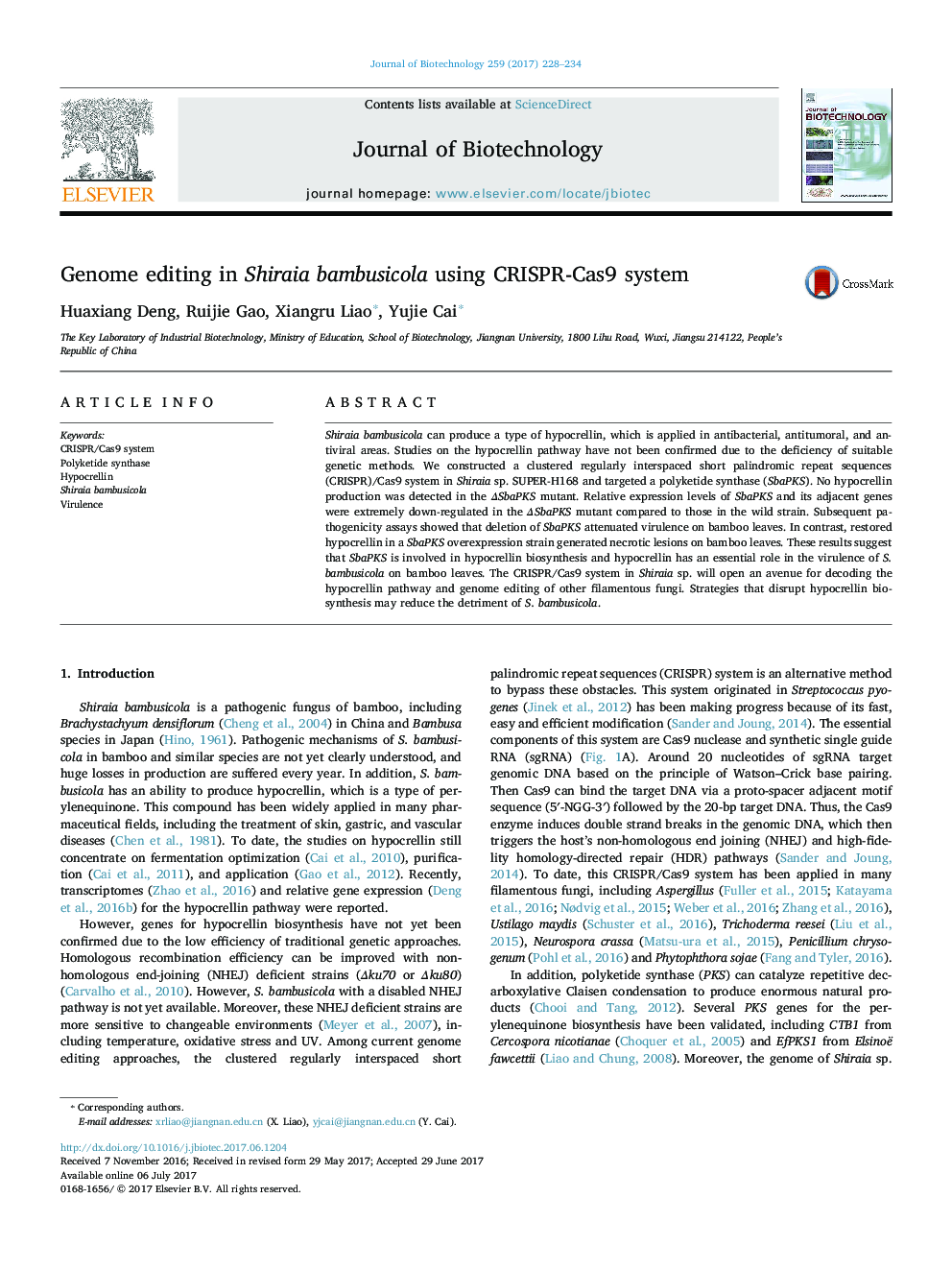| کد مقاله | کد نشریه | سال انتشار | مقاله انگلیسی | نسخه تمام متن |
|---|---|---|---|---|
| 6451942 | 1416984 | 2017 | 7 صفحه PDF | دانلود رایگان |

- The CRISPR/Cas9 system was constructed in Shiraia sp. SUPER-H168.
- A polyketide synthase was validated by this system.
- The PKS is involved in hypocrellin biosynthesis.
Shiraia bambusicola can produce a type of hypocrellin, which is applied in antibacterial, antitumoral, and antiviral areas. Studies on the hypocrellin pathway have not been confirmed due to the deficiency of suitable genetic methods. We constructed a clustered regularly interspaced short palindromic repeat sequences (CRISPR)/Cas9 system in Shiraia sp. SUPER-H168 and targeted a polyketide synthase (SbaPKS). No hypocrellin production was detected in the ÎSbaPKS mutant. Relative expression levels of SbaPKS and its adjacent genes were extremely down-regulated in the ÎSbaPKS mutant compared to those in the wild strain. Subsequent pathogenicity assays showed that deletion of SbaPKS attenuated virulence on bamboo leaves. In contrast, restored hypocrellin in a SbaPKS overexpression strain generated necrotic lesions on bamboo leaves. These results suggest that SbaPKS is involved in hypocrellin biosynthesis and hypocrellin has an essential role in the virulence of S. bambusicola on bamboo leaves. The CRISPR/Cas9 system in Shiraia sp. will open an avenue for decoding the hypocrellin pathway and genome editing of other filamentous fungi. Strategies that disrupt hypocrellin biosynthesis may reduce the detriment of S. bambusicola.
Journal: Journal of Biotechnology - Volume 259, 10 October 2017, Pages 228-234